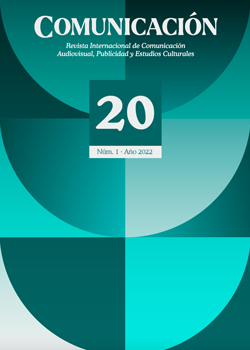Abstract
The collapse of paradigms due to the pandemic, also in marketing behavior, requires an in-depth adaptive response from brands. But getting into adaptation proposals requires an exploration in accordance with the philosophy of knowledge for action, always required in all marketing-ad- vertising research. New paradigms must emphasize an urgent response given the situation. This requires building a new content extraction strategy, applied to the triangle formed by brands, advertising and new media.
A new methodological strategy is proposed to overcome the logical insufficiency of the existing documentary corpus, capable of integrating information in highly diverse formats (for example, expert testimonies and professional surveys), from a careful selection of publications, creating an exploratory metacorpus but of high objective qualification.
With the proposed strategy, we believe we have managed to verify the state of play and at the same time offer guidance for brands and their advertising, as they forced by market trends and new media, already existing before the pandemic, but now accelerated. Branding and advertising philosophies are highlighted for a relaunch and for the improve of automated measurement of results, given the end of the cookies.
References
Aaker, J. L. (1997). Dimensions of brand personality. Journal of Marketing Research, 34 (3), 347 356. Adgate, B. (2020). From the Experts: Media and Advertising in 2021. Forbes. https://www.forbes.com/sites/bradadgate/2020/12/07/media-an-advertising-outlook-in-2021/sh=77ed4b1070cc.
Bradley, S. (2021). How do you solve a problem like... making the case for advertising during a pandemic, 12 de enero. https://www.thedrum.com/news/2021/01/12/how-do-you-solve- problem-making-the-case-advertising-during-pandemic.
Cao, Y., & Wang, L. (2017). Automatic Selection of t-SNE Perplexity. ArXiv, abs/1708.03229. Carracedo, P. et al. (2020). Research lines on the impact of the COVID-19 pandemic on business. A text mining analysis. Journal of Business Research. 117 (11). 21-40.
Clouder, L. & King, V. (2015). What works? A critique of appreciative inquiry as a research methodology. In Huisman, J., & Tight, M. (comps.). Theory and method in higher education research (pp. 169-190). Bingley.
Courtney, A.E. and Lockeretz, S.W. (1971). A woman’s place: an analysis of the roles portrayed by women in magazine advertisements. Journal of Marketing Research. 8(1), 92-95.
Dong, B., et al. (2015). Effect of customer participation on serviceoutcomes: the moderating role of participation readiness”. Journal of Service Research, 18(2), 160-176.
Naveen Donthu, N., y Gustafsson, A. (2020). Effects of COVID-19 on business and research. Journal of Business Research. 117(9) 284-289. https://doi.org/ 10.1016/j.jbusres.2020.06.008
Douriau, V. Et al. (2007). A Content Analysis of the Content Analysis Literature in Organization Studies: Research Themes, Data Sources, and Methodological Refinements. 10 (1), 5-34. https://doi.org/ 10.1177/1094428106289252
Dowling, G.R. and Kabanoff, B. (1996). Computer-aided content analysis: what do advertising slogans have in common? Marketing Letters, Vol. 7 No. 1, 63-75.
Ferber, R. and Wales, H.G. (1958). The effectiveness of pharmaceutical advertising: a case study. Journal of Marketing, 22 (4), 398-407.
Hague, P. y Wilcock, C. (2021). How To Get Information For Next To Nothing. https://www.b2binternational.com/publications/desk-research/
Hannigan, T. et al. (2019). Topic modeling in management research: rendering new theory from textual data. Academy of Management Annals. 13 (2), 586-632.
Holt, D. B.(2004). How Brands Become Icons: The Principles of Cultural Branding. Harvard Business School Press.
Kantar (2020). What is changing in the world of advertising. Kantar. https://www.kantar.com/inspiration/future-proof-podcast/what-is-changing-in-the-world-of-advertising
Key, T.; Keel, A.(2020). How executives talk. European Journal of Marketing. 54(3), 546-569. https://doi.org/10.1108/EJM-01-2019-0105.
Kolbe, R.H. and Albanese, P.J. (1996). Man to man: a content analysis of sole-male images in male- audience magazines. Journal of Advertising. 25 (4), 1-20.
Krippendorff, K. (2018). Content analysis: An Introduction to its Methodology. Sage Publications. Lee, L. et al. (2020). Making sense of text: artificial intelligence-enabled content analysis.
European Journal of Marketing. 54(3), 615-644. https://org.doi/10.1108/EJM-02-2019-0219. Leonidou, C.N. y Leonidou, L.C. (2011). Research into environmental marketing/management:a bibliographic analysis. European Journal of Marketing. 45, (1/2), 68-103.
Merkle (2020). Customer engagement report. Report covid 19 edition. Merkle Inc. https://www. merkleinc.com/thought-leadership/white-papers/customer-engagement-report-covid-19- edition.
Miller, D.W. and Toman, M. (2016). An analysis of rhetorical figures and other linguistic devices incorporation brand slogans. Journal of Marketing Communications, 22(5), 474-493.
Moorman, C. y McCarthy, T. (2021). CMOs: Adapt Your Social Media Strategy for a Post-Pandemic World. Harvard Business review. https://hbr.org/2021/01/cmos-adapt-your-social media- strategy-for-a-post-pandemic-world.
O’Connor, M. (2020). The state of OOH advertising. https://www.clickz.com/the-state-of-ooh-advertising-in-2021/264437/
Ostler, J. (2020). Media in 2021. Tough Cookies. https://www.kantar.com/inspiration/advertising- media/media-in-2021-tough-cookies
Perrin, James (2021). 5 ways the pandemic will change marketing and advertising in 2021. https://www.etchuk.com/insights/5-ways-the-pandemic-will-change-marketing-in-2021
Pitt, C. (2020). Automated Text Analysis of Online Content in Marketing: Dictionary-Based Methods and Artificial Intelligence. [Tesis doctoral, Industrial Economics and Management.]
Resnik, A. y Stern, B.L. (1977). An analysis of information content in television advertising. Journal of Marketing. 41(1), 50-53.
Rokka, J. and Canniford, R. (2016). Heterotopian selfies: how social media destabilizes brand assemblages. European Journal of Marketing. 50 (9/10), 1789-1813.
Searchengineland (2020). The Periodic Table of SEO Factors https://searchengineland.com/ seotable.
Strauss, A.L. Y Corbin, J. (1990): Basics of Qualitative Research: Grounded Theory, procedures and techniques. Sage.
Taylor, Ch. (2020). Advertising and COVID-19. International Journal of Advertising. 39(5), 587-589. https://org.doi/10.1080/02650487.2020.1774131
Triantos, A., et al. (2016). Anthropomorphic packaging: is there life on ‘mars’? European Journal of Marketing. 50 (1-2), 260-275.
Van der Maaten, L.(2014). Accelerating t-SNE using Tree-Based Algorithms. Journal of Machine Learning Research. 15(93). 3221−3245.
WFA (2020) .Cross Media Measurement. https://wfanet.org/leadership/cross-media-measurement.
Zahedzadeh, G. (2017). Overt attacks and covert thoughts. Aggression and Violent Behavior, 36, 1-8. https://org.doi/10.1016/j.avb.2017.06.009.
Zetsche, S. (2021). The case for dynamic advertising in an uncertain world. The Drum. https://www.thedrum.com/industryinsights/2021/01/14/the-case-dynamic-advertising-uncertain- world?

This work is licensed under a Creative Commons Attribution-NonCommercial-ShareAlike 4.0 International License.
Copyright (c) 2022 Jose Luis León Sáez de Ybarra

